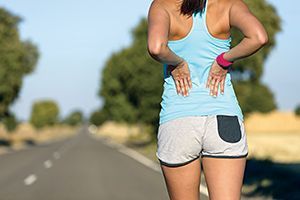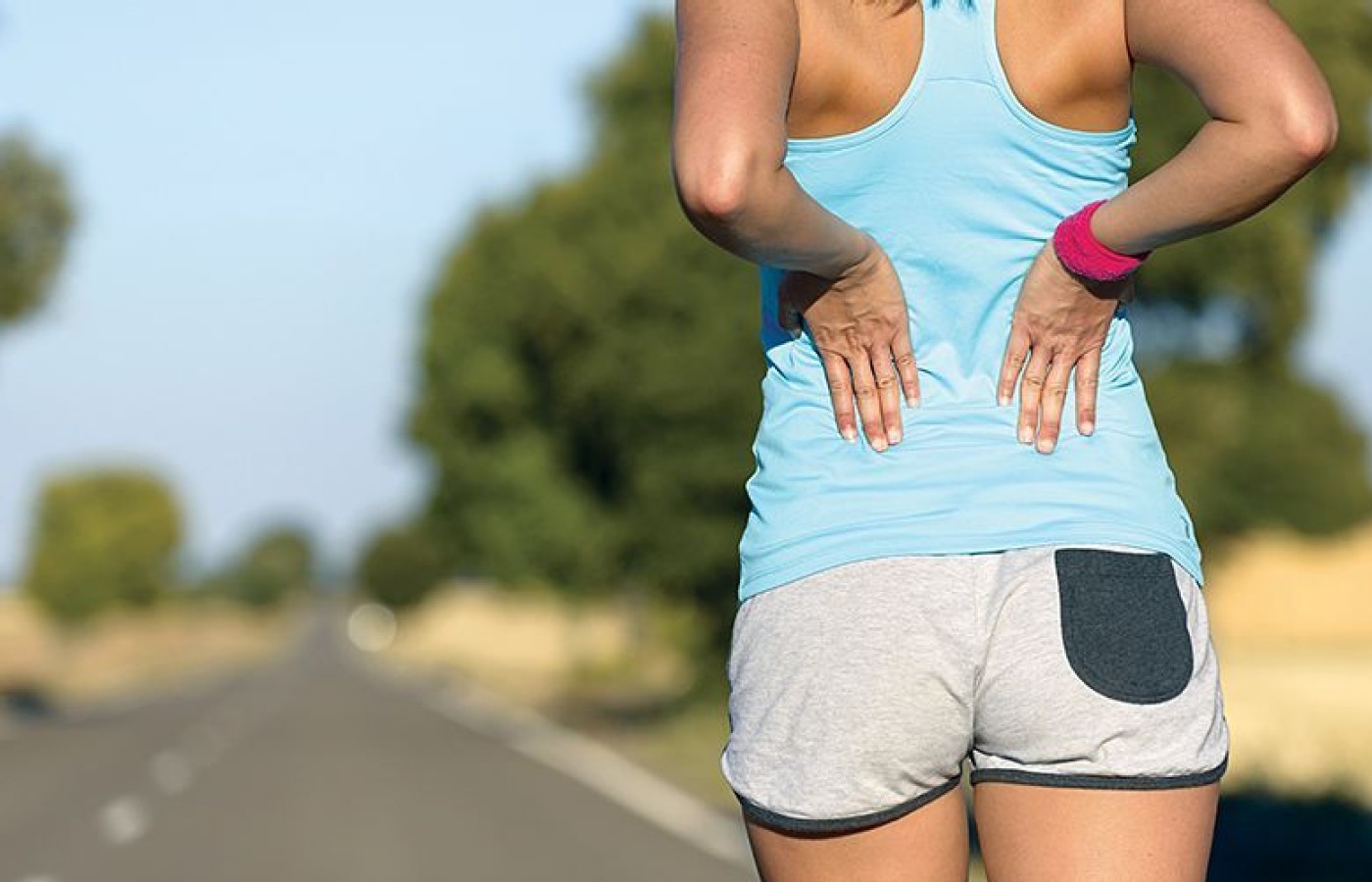New York's highest court of appeals has held that no-fault insurers cannot deny no-fault benefits where they unilaterally determine that a provider has committed misconduct based upon alleged fraudulent conduct. The Court held that this authority belongs solely to state regulators, specifically New York's Board of Regents, which oversees professional licensing and discipline. This follows a similar recent ruling in Florida reported in this publication.
Delayed-Onset Muscle Soreness: Current Insights on Recovery Strategies
Delayed-onset muscle soreness (DOMS) is a common occurrence, whether we're providing exercise prescriptions to our fit and athletic population or progressing a patient through a rehabilitation program. Although there are a wide variety of recovery strategies, research appears to be either lacking or conflicts with current general practice.
Recovery strategies are designed to reduce pain and recover faster between exercise prescriptions. However, this must be balanced with the ultimate goal for your patient or athlete, whether it's to increase strength, power or muscle hypertrophy. Let's explore some of the current research into the most popular and effective recovery strategies, and discuss why you need to balance their use with the patient's overall goals.
Massage Therapy
First, let's look at massage therapy and provide some concrete guidelines of when, and how long, you can apply massage therapy in DOMS recovery. Studies have generally shown massage to be effective for DOMS, reducing pain and in some cases improving function. However, the studies differ in the treatment duration and whether the treatment was performed before, immediately after or 48 hours after DOMS.

One study1 evaluated massage performed for 10 minutes approximately 30 minutes after eccentric exercise. Massage was shown to reduce DOMS by approximately 30 percent, but had no effect on muscle function. A comprehensive review2 asserted that massage may reduce DOMS, but questions whether force recovers more quickly.
A recent study, however, found massage did in fact help with function in the form of gait performance.3 Massage was provided for 15 minutes on the same day DOMS was introduced via isotonic exercises (going up and down stairs). Not only was there a reduction in pain, but also an improvement in gait on the same day DOMS and massage were applied. (It would be have been interesting if the study also had looked at the effects after 48 hours.)
What about applying massage prior to an intense exercise session? Shagufta, et al. (2014) compared vibration to massage therapy in terms of DOMS recovery.4 Fifteen minutes of massage, applied prior to the performance of an eccentric exercise, was effective in the prevention of DOMS, in addition to restoration of concentric strength (1 RM). However, it had no effect on maximal isometric force.
Massage therapy also was assessed for its impact on relieving muscle soreness 48 hours post-exercise. Andersen L.L., et al. (2013) examined whether massage therapy had any acute effects on muscle soreness, comparing massage to active recovery.5 Massage was provided to the upper trapezius muscle for 10 minutes. Perceived soreness significantly decreased 20 minutes after treatment. However, the effects diminished within the hour. Findings suggest massage is just as effective as active exercise in reducing muscle soreness.
With respect to massage and DOMS, timing of massage sessions need to be taken into consideration. Massage can be applied before, immediately after and over the next 48 hours. In the studies referenced above, the massage sessions provided also were short in nature. Experimenting with longer massage sessions may impact results differently.
A study by Kargarfard M., et. al. (2015) found body-builders who received a 30-minute massage after an exercise session demonstrated a better recovery rate.6 Working with athletes in the field can allow you to perform short massage sessions and have a positive effect on DOMS. In the clinical setting, experimenting with 30- to 60-minute massage sessions may provide better results.
Stretching
Stretching, static stretching in particular, has been used as a "warm-up" prior to exercise, and as a strategy to prevent DOMS. Does it work? The research overwhelmingly points to the answer being no. A Cochrane Review in 2007 included 10 studies and found no evidence that muscle stretching reduced delayed-onset muscle soreness in young, healthy adults.7 The study was updated in 2011 with two additional studies and reached the same conclusion.8
A study by Torres R., et al. (2013) noted favorable effects on muscle stiffness following repeated bouts of stretching days following exercise.9 However, there was no change with respect to DOMS. If the goal is to recover faster from DOMS, stretching may not be the best strategy to use. In recent years, there has been a shift in focus from static stretching to dynamic exercises in reducing DOMS. Again, timing of your strategy prescription may be the ultimate factor in its effectiveness.
Cryotherapy
Various cryotherapy strategies, such as ice packs, cold-water immersion and recently, whole-body cryotherapy, are quite common practices in rehabilitation and sports performance recovery. Their effects on DOMS are well-known. A recent systematic review by Hohenauer E., et al. (2015) confirmed that cryotherapy reduced DOMS up to 96 hours post-exercise and RPE (ratings of perceived exertion) up to 24 hours compared to passive controls.10 However, the use of cryotherapy may need to be assessed depending on what the ultimate goal is.
A recent study by Roberts L.A., et al. (2015) looked at the effects of cold-water immersion on long-term adaptations in muscle to strength training.11 Results showed that cold-water immersion attenuated long-term gains in muscle mass and strength. Although you may get better recovery, you could be sacrificing long-term strength and muscle gains. If this is the case, what other strategies can we utilize to maintain muscle and strength?
Active Exercises
Lower-intensity exercises prior to a maximal eccentric contraction may provide benefit against muscle damage. Lin M.J., et al. (2015) evaluated whether low-intensity eccentric contractions (performed with a load of 10 percent of maximal voluntary isometric contraction strength with reps in the 30 to 60 range) could protect against muscle damage.12 Results showed a 30-66 percent protection against muscle damage induced by maximal eccentric exercises. The protective effect lasted one week.
What about maximal isometric contractions? A study by Lima L.C., et al. (2015) found maximum isometric contractions performed 2-4 days prior to a demanding eccentric exercise provided a protective effect from post-exercise soreness.13 The authors recommended putting patients through these non-damaging isometric exercises prior to putting patients through unaccustomed exercises.
Chen H.L., et al. (2012) reached similar conclusions, finding two maximum isometric contractions performed two days before eccentric training could be an effective strategy to minimize muscle damage.14 If you aren't utilizing isometrics in your practice prior to isotonic resistance training, these results should provide evidence they may be beneficial.
Take-Home Points
Various recovery strategies can help your athlete patients recover faster. Massage therapy, cryotherapy, stretching and active exercise all appear to provide some form of relief from DOMS. However, while some may improve DOMS, they also may stunt muscle strength, power or growth. Timing of these strategies is also important. A certain strategy may work best after an exercise session or two days prior. As you can see, there are no straight answers to what works and what doesn't.
In some cases, such as when using cryotherapy, new research is showing the benefits of recovery need to be weighed against long-term impact on muscle strength, power and hypertrophy. Applying massage therapy is practical before, during and after a training session, since the 15-minute time frame has been shown to be effective. Static stretching by itself may not be the best use of a patient's or athlete's time when other strategies are more effective. Finally, the use of isometrics is an important strategy to prepare an athlete / patient for the stresses of a more intense exercise program.
References
- Zainuddin Z, et al. Effects of massage on delayed-onset muscle soreness, swelling, and recovery of muscle function. J Athl Train, 2005. Jul-Sep; 40(3):174-80.
- Moraska A. Sports massage: a comprehensive review. J Sports Med Phys Fitness, 2005 Sep;45(3):370-80.
- Han JH, et al. Effects of therapeutic massage on gait and pain after delayed onset muscle soreness. 2014. J Exerc Rehabil, Apr 30;10(2):136 -40.
- Shafufta I, et al. To compare the effect of vibration therapy and massage in prevention of delayed onset muscle soreness (DOMS). J Clin Diagn Res, 2014 Jan;8(1):133-136.
- Andersen LL, et al. Acute effects of massage or active exercise in relieving muscle soreness: randomized controlled trial. J Strength Cond Res, 2013 Dec;27(12):3352-9.
- Kargarfard M, et al. Efficacy of massage on muscle soreness, perceived recovery, physiological restoration and physical performance in male bodybuilders. J Sports Sci, 2015 Sep 3:1-7.
- Herbert RD, et al. Stretching to prevent or reduce muscle soreness after exercise. Cochrane Database Syst Rev, 2007 Oct. 17;(4:CD004577.
- Herbert RD, et al. Stretching to prevent or reduce muscle soreness after exercise. Cochrane Database Syst Rev, 2011 Jul 6;(7):CD004577.
- Torres R, et al. Effect of single bout versus repeated bouts of stretching on muscle recovery following eccentric exercise. J Sci Med Sport, 2013 Nov;16(6):583-8.
- Hohenauer E, et al. The effect of post-exercise cryotherapy on recovery characteristics: a systematic review and meta-analysis. PLoS One, 2015 Sep 28;10(9):11.
- Roberts LA, et al. Post-exercise cold water immersion attenuates acute anabolic signalling and long-term adaptations in muscle to strength training. J Physiol, 2015 Sep;593(18):4285-301.
- Lin MJ, et al. Low-intensity eccentric contractions of the knee extensors and flexors protect against muscle damage. Appl Physiol Nutr Metab, 2015 Oct;40(10):1004-11.
- Lima LC, et al. Attenuation of eccentric exercise-induced muscle damage conferred by maximal isometric contractions: a mini review. Front Physiol, 2015 Oct 27;6:300.
- Chen HL, et al. Two maximal isometric contractions attenuate the magnitude of eccentric exercise-induced muscle damage. Appl Physiol Nutr Metab, 2012 Aug;37(4):680-9.



